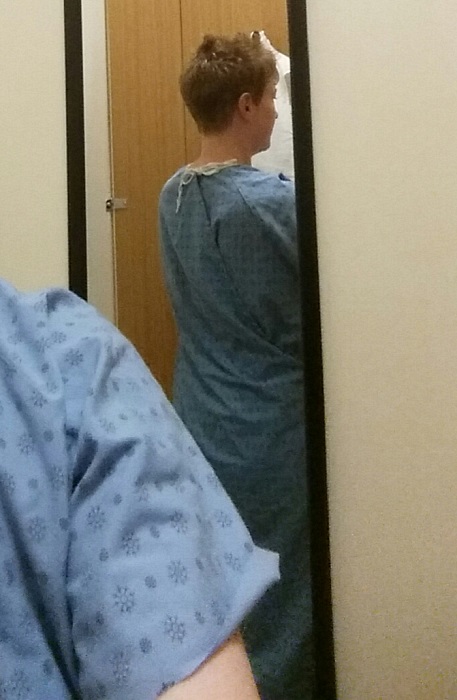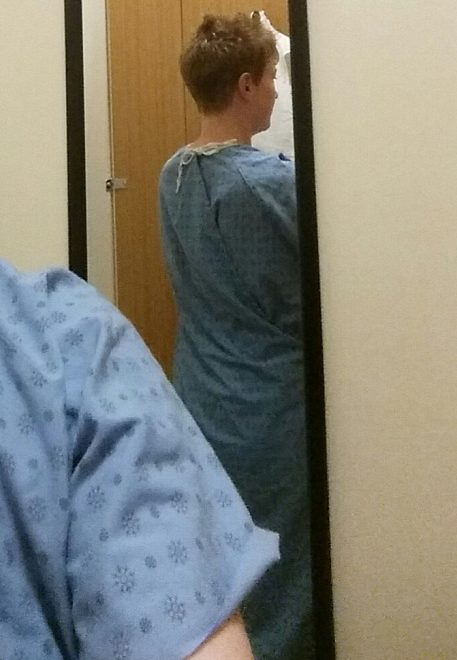This is a post for National Health Ethics Week (NHEW), for patients and their loved ones. I work in bioethics, sometimes called medical ethics or healthcare ethics. My job’s in research ethics. That means protecting the rights of the patients (and healthy people) who agree to be in research studies.
This is important to me, because my mom was in a research study. And she had a bit of a surprise. She was still happy she was in the study, though!
If you – or a loved one – are asked to be in a study, ask questions. The folks running the medical research are supposed to answer your questions about their study. That’s part of their job!

Sometimes folks doing research will ask to take pictures of research participants. And sometimes a doctor will ask to take your photo, without a research study. Of an injury, or a rare disease, or another medical problem.
If anyone at a hospital or clinic asks to take your photo, ask them why. You’re allowed to know what your picture would be used for.
These are some questions my mom wished she’d asked:
- Why do you want to take my picture?
- What will these photos be used for?
- What part of me will be in the pictures? (it could be a hand, foot, face – any part of your body)
- If you take photos of my face, will parts of it be hidden? (Hiding the eyes, or mouth, on a photo can make it harder to recognize you)
- Will anyone – even other doctors or nurses – be able to recognize me from these photos?
- How will the photos be stored, and protected? (In Canada, papers and pictures from medical research studies have to be kept for 25 years! By the doctors, not you!)
Why should you ask about this? One reason is that sometimes a person can be recognized, even if the photograph isn’t of their face. Things like birthmarks, scars, and tattoos can be ‘identifiable’. Identifiable means that someone who sees the photo could recognize you. Without even seeing your name on the picture.
If a person has an uncommon hair colour, for example, they could be recognized for that. One of my mom’s friends had blue streaks in her hair for a while. Everyone could tell she was in a photo, even if only the back of her head was visible! Some people can even be recognized by photos of their rashes or skin conditions.
So, why does it matter if photos of you are identifiable? I’m going to tell you what happened to my mom. She was in the hospital, in intensive care, after surgery. She needed a ventilator to breathe for her, so she had to lie on her back in the hospital bed.
The doctors kept her sedated, asleep, so she could recover from an infection. And she stayed like that for more than a week. Because she was on her back for so long, she got a horrible bedsore (called a pressure wound) on her behind. The nurse said it was so bad, so deep, that they could see her tailbone.
It was as though the skin and flesh had been eaten away. Down to the bone. As you can imagine, this was very painful for her, after the doctors took her off the ventilator and woke her up from sedation.
The bedsore was one of the worst her doctors had seen; that’s what a few of them told her. And one of these doctors asked my mom to be in a research study, to try a new way to treat bad bedsores.
He said that the study might help her (or not), but her participation would help them find out if the new treatment was better than the old one. My mom was a helpful person, so she said yes.
She also liked the idea of getting the new treatment, and of helping the doctors. As part of the research project, a doctor asked my mom if they could take pictures of her bedsore. My mom said yes to that, too.
A bunch of photos were taken. She didn’t ask what these pictures would be used for. A week later, she was still in the hospital. There was a new doctor on duty, who checked on my mom’s bedsore.
When he was finished, the young doctor told her: “Your bum’s famous”. My mom was very embarrassed, and asked what he meant. He told her that the photos of her bedsore had been used in a big presentation.
The doctor told my mom that the hospital had a lecture every month, called a “Grand Round”. Doctors would do a presentation, to other doctors, about a specific patient’s medical problem – called a “case”. This way all the doctors who were at the lecture could learn about what worked – or didn’t – for patients. It’s a way to share knowledge between doctors, to give better medical care to patients.
During the Ground Rounds, photos would often be shown on a big screen. Like a small movie screen. The doctor told my mom that the patient usually isn’t identified, that the presenting doctors try to keep the patient’s identify a secret.
My mother’s name wasn’t on the photos that were projected onto the big screen in the Ground Rounds, but the bedsore looked so bad that this doctor said he recognized it from the photos shown during the presentation.
After he left, my mom told me that it made her really uncomfortable that all the doctors had seen photos of her bum. And on a movie screen, too. She was disappointed that the doctor who’d taken the pictures hadn’t told her he was going to use the photos for a big presentation.
She didn’t think there was anything wrong about the pictures being shown to other doctors. But she would have liked to know about it first. So she wouldn’t have been so surprised when this new doctor told her that her behind was famous.
That’s just one example of why you might should ask what your medical photos will be used for!
~~~~~~~~~~~

My mother passed away a few years ago. She loved gardening, and springtime.
She had diabetes, COPD (emphysema), and heart disease – along with a broken hip at the end.
So this post is dedicated to her.

